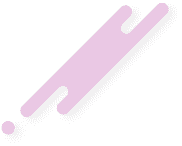In a recent insight into the hectic and turbulent world of web design, Rob Schwartz, renowned name in the industry, went into detail about tackling the omnipresent issue of a never-ending to-do list. For us in this field, the struggle with an avalanche of tasks - whether it's nailing down the perfect user interface, refining those attention-grabbing elements, or ensuring the site's responsiveness - is an all-too-familiar one. Schwartz offers a practical and effective triad to help manage our teetering task stacks.
Embrace minimalism: Streamlining and decluttering is key.
Prioritize necessities: Not every task requires the same level of urgency.
Adopt project management tools: There's no shame in getting a little help from technology.
Firstly, Schwartz emphasizes the philosophy of minimalism. In his view, stepping away from the incessant hum of data and distractions can be a total game-changer. This doesn't mean you chuck your coffee-fuelled brainstorming sessions out of the window. No, mate. Schwartz refers instead to the constant bombardment of information, notifications, and alerts that add to the mental noise and pull your attention in all directions. By practising digital minimalism, you provide your brain with the space and calm it needs to focus on the key tasks.
Next, Schwartz advocates for the prioritization of tasks. We're always chasing the latest design trend, mastering a new tool, or keeping up with Google's ever-changing algorithms. However, Schwartz suggests that not all tasks are made equal and some can wait. So, pull out those to-do lists and start placing importance tags. Be it a client's urgent request or that design detail you cannot ignore anymore, figure out those high-priority tasks, put them on your immediate radar, and let the rest simmer on the backburner for now.
Lastly, Rob Schwartz encourages to let go of the reins a bit and allow technology to play its part. In this day and age, there's a surfeit of project management tools capable of taking the load off your shoulders. With the Salesforce clouds, Asana's colourful interface to Trello's dynamic drag-and-drop boards, these project management tools are designed to do the heavy sorting, organising and scheduling, freeing you to channel your energies on the creative aspects of the craft.
In conclusion, Schwartz's advice provides us, the diligent, oft-overworked designers, with not only a plausible blueprint for managing our workload but also a reassurance. He realises that we're not just dealing with pixels and code but with an evolving form of art, and his practical, succinct wheelhouse can prevent us from losing our sanity (and valuable hours) to the digital chaos.
In our view, as web designers, Schwartz's stress on minimalism, prioritization and digital assistance hit the nail on the head. Web design evolves at a breakneck speed, and we've got to keep up with the Joneses. But amidst this whirl, it's easy to lose sight of what matters most – creating meaningful, attractive and functional designs that meet the needs of our users and clients. It’s all about balancing our artistry with practicality.
By maintaining a zen-like workspace, admitting that we can't do it all, being stringent about what makes our priority list and embracing technology’s hand of assistance, we're not just gaining control over an overstuffed to-do list, but we're heading back to our roots, where creativity isn't compromised for chaos. It’s a productive road back to our sane, creative minds, and that’s no bad thing, right? More time for pondering in the pub over a pint, at the very least. Let’s drink to that!


